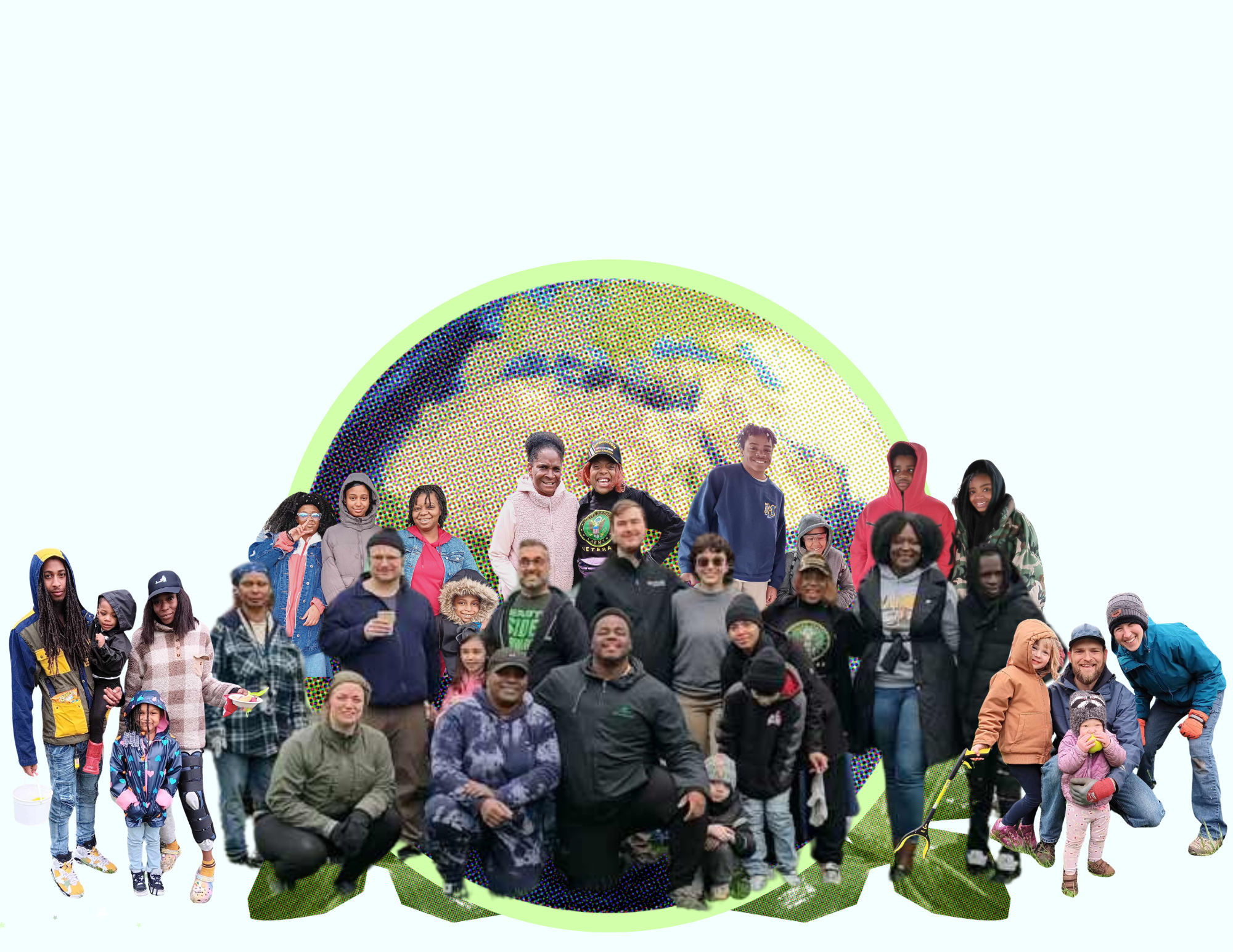
Who We Are
-
Who We Are -
Our Mission
We foster sustainable, community-led development by transforming unbuilt lots and cultivating regenerative resources. We empower residents to create resilient, sustainable neighborhoods through stewardship, environmental education, and engagement.
Our vision is to lead sustainable development on the East Side that meets community needs without displacing existing residents. Through inclusive planning and equitable investment, we aim to create vibrant, resilient neighborhoods where all residents benefit from improved housing, green spaces, and economic opportunities while preserving the cultural fabric and history of the community.
Our Equity-Focused Vision
Our Five Pillars
-

1- Revitalize
We breathe new life into underutilized spaces, transforming them into vibrant, thriving outdoor community hubs.
-

2- Redevelop
We transform unbuilt lots into vibrant community assets, building sustainable housing, renewable energy systems, workforce development hubs, and spaces for small businesses.
-

3- Educate
We empower individuals through education, providing the knowledge and skills required to lead environmental and community-focused initiatives.
-

4-Engage
We cultivate deep relationships with residents, partners, and co-owners, fostering collective action and sustained collaboration in stewarding our communities.
-

5- Resource
We connect communities with the essential resources and support to drive impactful, lasting change.
Why The East Side of Buffalo, NY?
*Map sourced from LISC NY’s WITHIN East Side
The East Side of Buffalo, New York, is a culturally rich area home to historic African American communities. It is comprised of 14 neighborhoods located east of Main Street, including Broadway-Fillmore, Cold Springs, Delavan-Grider, Ellicott, Fruit Belt, Fillmore-Leroy, Genesee-Moselle, Hamlin Park, Kensington-Bailey, Kenfield, Lovejoy, Masten Park, MLK Park, and Schiller Park.
The East Side has long faced environmental and health disparities due to industrial pollution, highway construction, economic disinvestment, and systemic neglect. Historically home to sources of pollution like General Motors, American Axle, and the Kensington Expressway, the area suffers from lingering contamination and ecological degradation that disproportionately impact its predominantly Black, South Asian, and Latinx communities. This has resulted in heightened exposure to pollutants, contributing to health issues such as asthma, which affects 11% of children and 7% of adults in the area. Additionally, the East Side has over 7,000 vacant lots, exacerbating urban decay and limiting opportunities for revitalization.
Compounding these challenges, the East Side is classified as a food desert, restricting access to fresh and affordable food while increasing rates of obesity and diabetes. The lack of green spaces and deforestation intensify environmental risks, contributing to poor air quality and extreme heat effects. Climate vulnerabilities, including intensifying blizzards, extreme lake-effect snow, and aging infrastructure in need of constant upkeep, further threaten the well-being of East Side residents. Addressing these disparities requires sustained investment, grassroots organizing, and community-led action to reclaim land, improve living conditions, and build a healthier, more just future.
Wagner's Redlining Map of Buffalo, 1937
EPA EJ Screen Map Density of People of Color in Buffalo Census Tracts Overlayed w/ EPA regulated sites 2024
EPA EJ Screen Community Report of East Side of Buffalo Census Tracts 2024
FAQs
-
There are several ways to get involved with ESS, including volunteering for our projects, participating in our educational programs, or partnering with us as a community leader or organization. Contact us directly to learn more about current opportunities.
-
ESS focuses on projects that promote sustainable development and ecological stewardship. This includes transforming vacant lots into green spaces, developing community gardens, offering educational workshops on sustainability, and advocating for clean mobility solutions in underserved neighborhoods.
-
ESS supports local residents by providing the tools, knowledge, and resources needed to lead and participate in community improvement projects. We offer educational programs, workshops, and hands-on training to empower residents to create sustainable, long-lasting change in their neighborhoods.
-
East Side Stewards is funded through a combination of grants, donations, and partnerships with local organizations and businesses. We also offer fee-based programs and services, with all proceeds reinvested into our community projects and educational initiatives to ensure sustainability and broader community impact.






